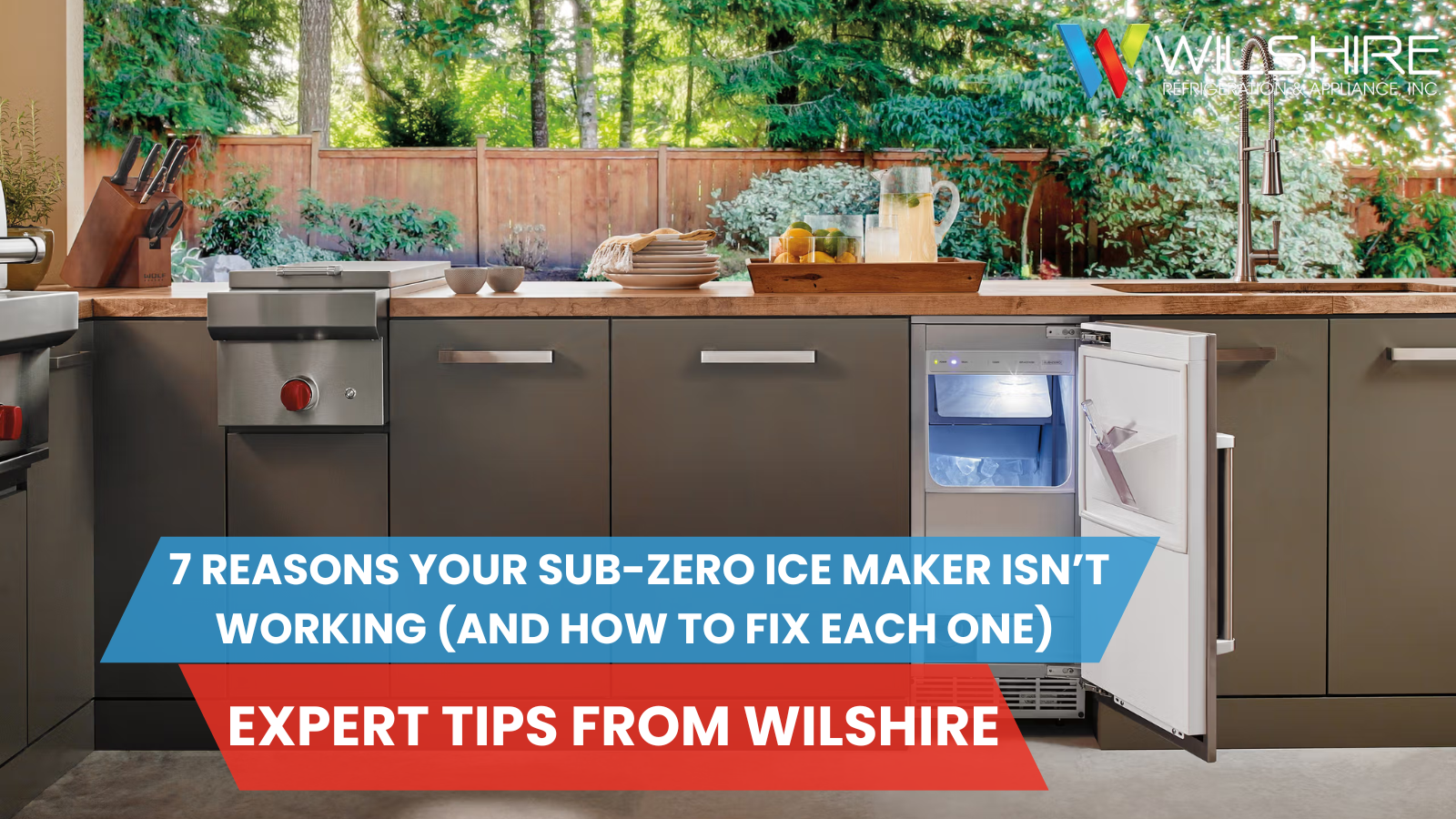A refrigerator is an essential appliance in any household, keeping your food fresh and drinks cold. However, it can be quite frustrating when you notice that your fridge is not cooling even though the light is on. This problem can stem from various issues, ranging from simple fixes to more complex problems. This guide will help you troubleshoot and solve this common issue with easy-to-follow steps and tips.
Quick Fixes for a Fridge Not Cooling
Check the Power Source
- Ensure the Fridge is Plugged In
Sometimes, the simplest solutions are the most overlooked. Check if your fridge is properly plugged into the power outlet. A loose plug can cause the refrigerator to lose power intermittently, affecting its cooling efficiency.
- Inspect the Circuit Breaker
If the fridge is plugged in but still not cooling, check your home’s circuit breaker. A tripped breaker can cut power to the fridge without affecting the light. Reset the breaker if necessary and see if this resolves the issue.
Adjust the Thermostat
- Locate the Thermostat
The thermostat controls the cooling level in your fridge. It’s usually located inside the fridge, either on the back or side walls. Ensure it’s set to the correct temperature. A setting of 37°F (3°C) is ideal for the fridge, while the freezer should be at 0°F (-18°C).
- Reset the Thermostat
If the thermostat is set correctly but the fridge is still not cooling, try turning it off and then back on. Sometimes, a simple reset can fix the issue. Set it to the coldest setting and wait a few hours to see if the cooling improves.
Ensure Proper Airflow
- Check for Obstructions
Make sure that food items and containers are not blocking the air vents inside the fridge. Proper airflow is crucial for maintaining the right temperature. Rearrange the items to allow air to circulate freely.
- Clean the Coils
Dirty condenser coils can impede the cooling process. These coils are usually located at the back or underneath the fridge. Unplug the fridge and clean the coils using a vacuum cleaner or a coil cleaning brush. Regular cleaning can significantly improve the fridge’s efficiency.
Long-Term Solutions for a Fridge Not Cooling
Inspect the Door Seals
- Check for Gaps
The door seals (gaskets) keep the cold air inside the fridge. Over time, these seals can wear out or become damaged, causing cold air to escape. Inspect the seals for any gaps or tears. Close the door on a piece of paper and try to pull it out. If it slides out easily, the seals might need replacement.
- Replace the Seals
If the seals are damaged, replace them with new ones. This is a relatively easy DIY task. Purchase the correct seals for your fridge model, remove the old ones, and install the new ones according to the manufacturer’s instructions. This can restore the fridge’s cooling efficiency.
Check the Condenser Fan
- Locate the Condenser Fan
The condenser fan helps cool the compressor and the condenser coils. If it’s not working, the fridge can overheat and stop cooling. The fan is usually located at the back of the fridge near the bottom.
- Test the Fan
Unplug the fridge and locate the fan. Spin the fan blades manually to see if they move freely. If they don’t, the fan motor might be faulty and need replacement. You can use a multimeter to test the motor for continuity. If it fails the test, replace the motor.
Evaluate the Evaporator Fan
- Access the Evaporator Fan
The evaporator fan circulates cold air from the freezer to the fridge. It’s located behind the freezer wall panel. If the fridge compartment is warm but the freezer is cold, this fan could be the problem.
- Test the Fan
Unplug the fridge and remove the freezer panel to access the fan. Check if the fan blades are blocked by ice or debris. Spin the blades manually. If they don’t move freely or the motor doesn’t work, replace the fan motor.
When to Call a Professional
- Persistent Issues
If you’ve tried all the above solutions and your fridge is still not cooling, it might be time to call a professional. Persistent issues could indicate more complex problems with the compressor, control board, or refrigerant levels that require expert diagnosis and repair.
- Safety Concerns
Handling electrical components and refrigerants can be dangerous. If you’re not comfortable performing these checks and repairs yourself, it’s best to hire a professional technician. They have the tools and expertise to safely fix the problem.
Preventative Maintenance Tips
- Regular Cleaning
Keep the condenser coils clean and ensure the air vents are free from obstructions. Regular cleaning can prevent many common cooling issues.
- Proper Loading
Avoid overloading your fridge. Ensure there’s enough space for air to circulate around the food items. Proper loading helps maintain consistent temperatures.
Frequently Asked Questions
Why is my fridge warm even though the light turns on?
A working light means the fridge has power, but issues with airflow, fans, or the thermostat can still stop cooling.
Does a dirty condenser coil cause a fridge to stop cooling?
Yes, dust buildup on the coils prevents heat from releasing, which weakens cooling performance.
How do I know if my refrigerator fan is the problem?
If the freezer stays cold but the fridge is warm, the evaporator fan may not be pushing cold air into the fridge compartment.
Can bad door seals make a fridge stop cooling?
Worn or loose gaskets let cold air escape, forcing the fridge to work harder and reducing cooling efficiency.
When should I call a professional for a fridge that won’t cool?
If power, settings, airflow, and fans all check out, the issue may involve the compressor or control board and needs expert repair.
Get Fast, Expert Fridge Repair Today
Address any small issues as soon as they arise. Timely repairs can prevent more significant problems and extend the life of your fridge. By following these quick fixes and long-term solutions, you can troubleshoot and resolve most issues when your fridge is not cooling but the light is on. Regular maintenance and prompt attention to problems can keep your fridge running efficiently for years to come.
If you find yourself facing persistent cooling issues or complex problems that you can’t resolve on your own, don’t hesitate to contact Wilshire Refrigeration. Our experienced technicians are equipped to handle all your refrigeration needs, ensuring your fridge returns to optimal performance quickly and efficiently. Book a service with Wilshire Refrigeration for reliable service and expert repairs to keep your kitchen running smoothly.




